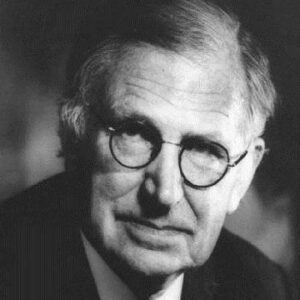Nevill Francis Mott was an English physicist who shared the Nobel Prize in Physics in 1977 for his work on noncrystalline, or amorphous, semiconductors’ magnetic and electrical properties. He explained why magnetic or amorphous materials can be metallic and insulating at the same time. He inherited his parents’ interest for scientific inquiries after being born to highly educated parents with scientific inclinations. He went on to study mathematics and theoretical physics at Clifton College, Bristol, and St. John’s College, Cambridge. Before beginning his work as a Lecturer in the Physics Department at the University of Manchester, he conducted research in Cambridge under R.H. Fowler, Copenhagen under Niels Bohr, and Göttingen under Max Born. He became Cavendish professor of experimental physics at the University of Cambridge after working for a number of years in a variety of institutions, a position he retained until his retirement. His early investigations concentrated on the theoretical analysis of gas collisions and nuclear difficulties, but he eventually broadened his research to include solid-state physics, such as metals and metal alloys, semiconductors, and photographic emulsions. In 1977, he shared a Nobel Prize in Physics for his work on the electrical structure of magnetic and disordered systems, particularly amorphous semiconductors.
Childhood and Adolescence
Nevill Francis Mott was born in Leeds, England, to Lilian Mary Reynolds and Charles Francis Mott on September 30, 1905. His father was the Senior Science Master at Giggleswick School, and his mother was a math teacher there as well.
His mother schooled him at home when he was a small child. He began his formal schooling when he was ten years old when he enrolled at Clifton College in Bristol. He subsequently went to Cambridge to study mathematics and theoretical physics at St. John’s College.
In Cambridge, he began his research with R.H. Fowler. In Copenhagen, he worked with Niels Bohr, while in Göttingen, he worked with Max Born.
Nevill Francis’s Career
Nevill In 1929, Francis Mott was hired as a lecturer in the University of Manchester’s Physics Department. In 1930, he returned to Cambridge as a fellow and professor of Gonville and Caius College, where he resided for a year.
He joined the University of Bristol as the Melville Wills Professor of Theoretical Physics in 1933. He became interested in the characteristics of metals and semiconductors after focusing his initial research on the theoretical analysis of collisions in gases, particularly the collision with spin-flip of an electron against a hydrogen atom.
H. W. Skinner and H. Jones inspired him greatly at Bristol, where he worked on the theory of transition metals, rectification, alloy hardness (with Nabarro), and the photographic latent image (with Gurney).
In 1938, he developed the theoretical description of the effect of light on a photographic emulsion at the atomic level as a result of his study into photographic emulsions.
He worked as a military researcher in London during WWII before becoming the Henry Overton Wills Professor of Physics and Director of the Henry Herbert Wills Physical Laboratory in Bristol in 1948. He authored several studies on low-temperature oxidation (with Cabrera) and the metal-insulator transition while in this role.
In 1954, he returned to the University of Cambridge to become the Cavendish professor of experimental physics. From 1959 to 1966, he was also the Master of Gonville and Caius College.
During the 1960s, he investigated the electrical conduction of various metals in order to investigate the conductivity potential of amorphous materials, which are named for their uneven or unstructured atomic structures.
His work eventually led to the invention of simpler and less expensive semiconductors that can be used in various electronic switching and memory devices instead of pricey crystalline semiconductors.
He formally left Cambridge in 1971, but he continued to work in research for the remainder of his life.
‘The Theory of Atomic Collisions’ (with H.S.W. Massey), ‘Electronic Processes in Ionic Crystals’ (with R.W. Gurney), and ‘Electronic Processes in Non-Crystalline Materials’ are some of the significant publications he produced (with E.A. Davis).
His Major Projects
He coined the term “Mott issue” to describe a paradox in quantum physics that demonstrates some of the problems in comprehending the nature of wave function collapse and measurement.
In condensed matter, he proposed the hypothesis of the Mott transition, which is a metal-nonmetal transition. Mercury metal vapor-liquid, metal NH3 solutions, transition metal chalcogenides, and transition metal oxides are all known to include this transition.
Achievements & Awards
In 1962, Mott was knighted.
He received the Copley Medal in 1972 “in appreciation of his original contributions to atomic and solid-state physics over a lengthy period of time.”
The Institution of Engineering and Technology awarded him the Faraday Medal in 1973.
In 1977, the Nobel Prize in Physics was jointly given to Nevill Francis Mott, Philip W. Anderson, and J. H. Van Vleck “for their basic theoretical discoveries of the electronic structure of magnetic and disordered systems.”
Personal History and Legacy
Nevill In 1930, Francis Mott married Ruth Eleanor Horder. They had three grandsons and two daughters.
He died on August 8, 1996, at the age of 90, after a brief illness.
Estimated Net worth
Unknown.


